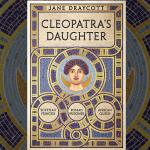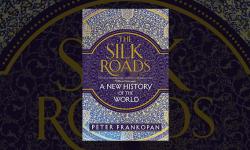Jane Draycott, Cleopatra's Daughter
Cleopatra's Daughter tells the story of perhaps one of the most politically successful women operating in Rome's Late RepublicA time in ancient Rome lasting from about 150BCE until the assumption of power by Octavian in 30BCE. It covers a period when the foundations of the Republic became more shaky, with 'great men' achieving dominance and often ignoring the laws and traditions of the Senate. and early PrincipateThe rule of the early Roman emperors, during which some features of republican government appeared to remain.. But surprisingly, it is a story about which few people know anything. Cleopatra VII must be one of the most famous - or infamous - women in the ancient world, immortalized in countless monuments, paintings, books, plays, programmes, and films. As a result, it is common knowledge that Cleopatra was romantically, and politically, connected with both Julius Caesar and Mark Antony. Most people are dimly aware that Cleopatra bore Julius Caesar a son, Caesarion, and perhaps people might know that she also had children with Antony, but that is usually where it ends. What people don't realize is that one of these children by Antony, her daughter Cleopatra Selene, started out life as an Egyptian princess - perhaps destined for the throne of Egypt - and queen of Crete and Cyrenaica, before becoming a prisoner of Octavian - later Augustus - and raised in his house. But unlike her brothers, she didn't die young or slide into insignificance, instead becoming co-ruler of the Roman-allied North African kingdom of Mauretania, reigning successfully for twenty years. It is a story that absolutely needs bringing into the public consciousness.
It is, perhaps, understandable that few historians have tried to do so thus far. As the author, Jane Draycott, admits, it is hard enough to reconstruct fully the life of any ancient person, let alone a woman. When one adds to this the fact that Cleopatra Selene 'succeeded quietly rather than failed loudly', and therefore didn't provoke the attention and tirades that, for example, were directed at her mother, the difficulty increases exponentially. P. 253. There simply aren't the sources available, beyond a basic timeline, to write a detailed biography. This makes it fruitful ground for historical fiction, but an arid desert for serious history.
P. 253. There simply aren't the sources available, beyond a basic timeline, to write a detailed biography. This makes it fruitful ground for historical fiction, but an arid desert for serious history.
So, how does Draycott do it? By weaving together the bits we know about Cleopatra Selene's life - gleaned not just from the canonical texts that have survived, but from poetry, other literary sources, and the archaeological record - with threads of information about Egyptian and Roman politics and life to create a rich and vibrant tapestry, building out and expanding on the direct evidence to create a picture that is not just engaging, but captivating. It is the work of a master craftsman. The reader comes away not just better informed about this infinitely fascinating queen, but about the world in which she lived and the circumstances under which she was forced to operate. But more than this, with the focus shifting ever so slightly from the beating heart of Rome, Draycott incorporates the world of the periphery, which rarely makes it onto the shelves of popular history.
Cleopatra's Daughter therefore also fits perfectly with prevailing trends in historiographyThe study of writing history, or of history that has already been written., branching out from the male-orientated, Eurocentric history of yesteryear, addressing hot topics in a sensitive - and sensible - way. And it couldn't be better timed. Given the recent airing of the Netflix's series on Cleopatra VII, and the furore it has subsequently caused, Draycott provides a soothing, well-reasoned, brilliantly researched, accessible and engaging oil to these suddenly turbulent waters.
- Log in to post comments







